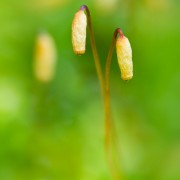Post Processing for Fresh Looking Water
Sometimes our internal struggle with color and white balance can leave us a bit perplexed. Where is the right balance, how “neutral” should I go, should it look this color? The answers to these questions are, just like everything else in photography and post-production, highly subjective.
But these questions are important to consider, especially in the case of water. We as landscape and nature shooters use water all the time as a main subject or as a supporting element in a scene. I feel that, when using water in a photo, it’s best to make the water fresh and clean in appearance, not something that looks dirty, murky, or like it will give you Giardia (trust me, Giardia isn’t even fun to think about). There are exceptions to this, of course, but generally the cleaner the better in my opinion.
Think about when you see a commercial for Caribbean vacations. What if the water in those scenes was a murky brown color? I don’t think travel agents would book as many Caribbean cruises. No… it’s the clean, inviting, blue/green water that makes it look so appealing. The same theory could go into a photo. That’s why I tend to leave water in images slightly blue in color.
Check out the following example and see what looks more fresh and inviting:
The first was processed to have a slightly cooler white balance temperature in the water areas. The second was processed to have a neutral white balance for effectively colorless water by using the white balance eye dropper, which results in what appears to be a brown muddy waterfall.
Check out this one as well. The white balance in the first image below was set fairly warm for the entire scene, but then a cooler white balance was masked in from a duplicate layer. The second has just the warm white balance over the entire scene:
Looking at the different versions of these shots, I ask myself “Which type of water would I want to stand barefoot in?” I hate water and have an irrational fear of drowning, so the answer is neither. But you get the idea.














